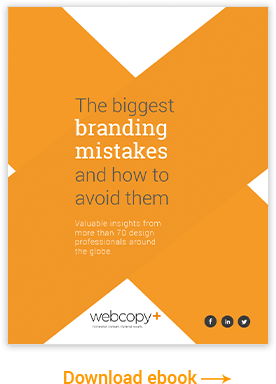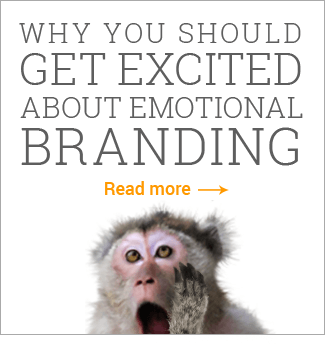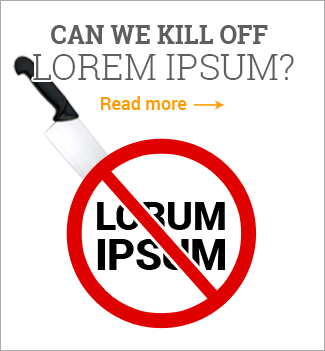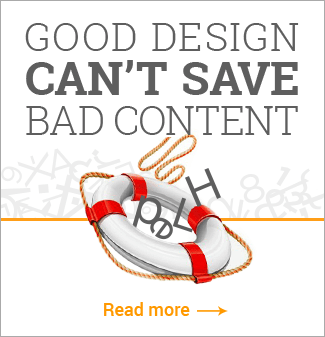As online visitors often jump from one link to another, you should treat your links like headlines. They should deliver your primary message in as few words as possible.
In fact, a recent study by Jakob Nielsen suggests the first couple of words in your links are imperative.
Nielsen reports: “Online reading is often dominated by the F-pattern. That is, people read the first few listed items somewhat thoroughly — thus the cross-bars of the ‘F’ — but read less and less as they continue down the list, eventually passing their eyes down the text’s left side in a fairly straight line. At this point, users see only the very beginning of the items in a list.”
Continue reading →
Posted on Apr 12 2009 10:32 pm by Web Copywriters
tags: Web Content Studies Writing for the Web
|
category: Writing for the Web |
Leave a comment

Whether you’re a New York IT firm or a San Diego design studio, SEO copywriting services can help you tap into a new stream of leads and sales.
The fact is that 85% of all new traffic to websites arrives via search engines. And it’s no secret that Google owns close to 75 per cent of the market. Hence, if SEO copywriting services get you to rank top 10 on Google, you’ll achieve a powerful return on your investment.
On the topic of investment, website owners often ask what do SEO copywriting services cost. Some supposed ‘SEO experts’ make themselves available for as little as $150 a project, while large SEO agencies can charge tens of thousands of dollars per month.
Continue reading →
Posted on Apr 6 2009 10:18 pm by Web Copywriters
tags: Copywriters SEO Copywriting
|
category: Website promotions Writing for the Web |
5 Comments
Your website’s headlines and kickers (a.k.a. sub headlines) need to tell visitors they’re in the right place.
You have a fraction of a second to orient people on the Web. If your web content does a good job, you’re often a step closer to a conversion. Miss the mark and your bounce rates will go through the roof.
A headline takes more than a catchy hook or angle to get prospects to stop and scan your web content. You need to align your headlines and web content with your visitors’ emotional drivers or trigger points.
The most effective way to achieve this is to leverage what you know about your target audience. Familiarity can help you nail the right information, keywords and angle.
But always be sure to provide practical information on where they’re at and what you can do for them. Vague statements don’t stick well on the Web. “5 Writing Tips for Web Designers” is a lot more helpful to visitors than a generic headline, such as “Writing and Web Design.”
Precise, practical headlines help your visitors get to the right information, and spare them time and frustration.
Posted on Mar 17 2009 11:51 pm by Web Copywriters
tags: Website Conversions Writing for the Web
|
category: Writing for the Web |
2 Comments
When you’re creating or revamping your web content, be sure to periodically ask yourself: “Does my audience care?”
If the answer is no, you’re headed down a slippery slope. That’s because web content should speak to and cater to the visitor – not the business owner, designer, developer, programmer, or your spouse. Indeed, the consumer is the true king of the Web.
To help achieve useful web content, you need to define not only what content will be published, but why you’re publishing it in the first place.
Self-centric jargon just gets in the way. Visitors want to know how you can help them. So tell them.
Don’t waste their time with we-driven copy. Respect your online guests.
Pepsi reportedly spent $1.2 billion over three years to give its products a facelift, including Pepsi’s new logo, which promotes the message ‘hope’.
It piggybacks on President Obama’s widely celebrated message of hope. And, per Michael Scherer’s article in Time, Pepsi’s hope messages are plastered throughout America’s capital.
Ironically, as the article reports, President Obama and his team are not necessarily fans of Pepsi. They prefer Coke.
Perhaps Pepsi’s hoping the ads — created by Arnell — will steer Obama and his administration to “the new generation” of the colas.
Posted on Mar 7 2009 12:02 am by Web Copywriters
tags: Marketing
|
category: Writing for the Web |
Leave a comment
Consumers suffer from information overload. Billboards, TV commercials, radio spots and direct mail were bad enough. Now we have to deal with the saturated Web.
Don’t waste your prospects’ time with loads of web content that’s not useful. Only provide your visitors content that’s to the point and relevant to their needs.
Is your web content concise and relevant?
Put yourself in your prospects’ shoes. Are you forcing them to dig through long-winded intros, self-absorbed messages or babbling paragraphs?
Make an effort to cut down your web content into digestible chunks. Kill unneeded words, and use short sentences and paragraphs.
Also, take advantage of headlines, which allow online readers to scan web content with ease.
When you make an effort to promote usability and readability on your website, it makes it easier for prospects to get the information they need. And they’ll reward you with phone calls and e-mails.
Well-versed web content writers know web users have short attention spans. In fact, some studies indicate your web content has less than a second to make an impression. It is doable if you understand your audience.
How do you get inside the heads of your audience? Figure out the answers to some key questions, including:
1. What do they want?
2. What do they fear?
3. What do they value?
Whether you’re developing web content, print brochures or radio ads, gain a deeper understanding of your target audience by going beneath the skin. It’ll help you deliver your message with impact.
Posted on Mar 5 2009 3:20 am by Web Copywriters
tags: Website Conversions Writing for the Web
|
category: Writing for the Web |
1 Comment
I was asked today, “What defines effective web content?”
Effective web content is designed with the intended user in mind. It’s intuitive, logical, and fosters functionality. Effective web content allows online visitors to access information they want immediately. It promotes maximum searchability and minimum download time. It anticipates users’ information requests. It gets your desired actions completed.
Just remember, on the Web, less is more. So keep your web content simple.
Posted on Mar 4 2009 12:17 am by Web Copywriters
|
category: Writing for the Web |
Leave a comment

When it comes to web content, many business owners believe they can accomplish everything a professional web copywriter can — and more. However, when business owners attempt to write their own web copy, it often leads to frustration, lost time and missed opportunities.
In fact, many businesses come to Webcopyplus looking for a web copywriter after struggling to complete their web content for weeks, sometimes months. In the interim, they get their web designers to upload their old web content, or just put the project on hold. Regardless, the final outcome is usually substandard.
Since web copy development often causes designers major hassles and delays, it’s baffling to find web designers who simply don’t grasp and appreciate the value a well-versed web copywriter can bring to a project.
An article written by a Maine web designer was recently brought to my attention, in which she stated (verbatim):
Continue reading →
Found on everything from poorly translated signs and menus to bizarrely worded adverts and strange t-shirt slogans, the misuse of English can be found everywhere.
Check out this latest collection of amusingly ‘creative’ English from around the world.
There’s also a steady stream of side-splitting English at, well, Engrish.com.
Posted on Feb 17 2009 3:37 am by Web Copywriters
tags: Copywriters Writing for the Web
|
category: Writing for the Web |
Leave a comment






